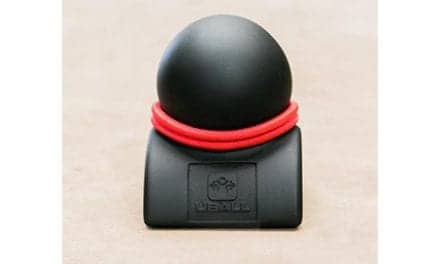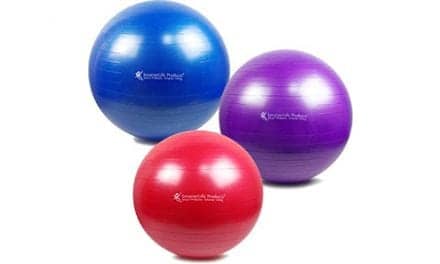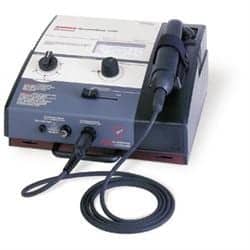by Frank Long
The Big Apple in the East and Tinseltown in the West reflect differences in style, tempo, and attitude that characterize the country’s geographical bookends. As dramatic as those differences may be, however, the entire North American land mass shares a passion for athletic competition. In fact, in the United States since 2003, the percentage of men and women engaged in sports and exercise on an average day has risen to more than 19%.1 The ascendancy of competitive sports has particularly come into focus with a steady rise in participation across the board for individuals age 15 years to 55 years and older.2
But wherever athletes are found, athletic injuries are soon to follow, so it’s not surprising that sports participants of every stripe seem to find their way to PT clinics—no matter where they live and play. And, chances are when that athlete walks into a clinic, the one thing on his or her mind is to return to competition sooner rather than later. For this article, Physical Therapy Products searched out two therapists, one from each coast, to provide perspective about this attitude that is part and parcel of this population, and offer tips about treating athletes who share a common competitive credo regardless of whether they play on sand, grass, or parallel bars.

The gym floor at Physical Therapy & Wellness Institute, Hatfield, Pa, is stocked with gear that provides multiple approaches for treating athletic injuries. Among the technologies are the Pro Fitter 3D Cross Trainer, BOSU balls, and a TRX system. Matt Brennan, PT, DPT, clinical supervisor at the location, says the athletic population is both a challenging group, and one of the most fun to treat.
Treating Athletic Injuries
The nation has no shortage of sports medicine clinics, but they are not always accessible. Factors such as scheduling, insurance coverage, and distance may separate athletes from big-name sports specialty operations, leaving many to “go local” for their physical therapy. When that happens, therapists who see a general clientele must quicky adopt an athlete-centric focus, which can mean keeping an open mind about the skills demanded by 21st century sports. Athletic endeavor has changed since the days when marathons ruled the world. One of those changes is a new generation of obstacle course events that has explodeed in popularity, attracting enthusiastic participants, and causing injuries that differ from plain old running.
Aside from mud, dirt, and unpredictable terrain, obstacle course competitors put demands on their upper extremities and torso in a way marathoners do not. If that is difficult to visualize, consider that climbing nets, crawling under barbed wire, and flinging across monkey bars is common at such events. Competitors don’t seem to mind the extra strain, though, considering in 2015 obstacle racing circuits such as Tough Mudder and Spartan Race were reported to have drawn more participants than marathons.3
The change of pace these events offer seems to be enjoyed even by the PTs who treat the injured. That is the perspective taken by Matt Brennan, PT, DPT, clinical supervisor of the Physical Therapy and Wellness Institute’s (PTW) Hatfield, Pa, location. Brennan says when he treats athletes who are among the growing population of obstacle course competitors, he sees injuries that typically are absent among running-only athletes.
“It’s fun because you can be treating one problem and look at other areas that may be affecting them,” Brennan says. “For instance, if they had some shoulder weakness and they were doing an obstacle course, where do they compensate? Maybe they have a weak core, and so they’re overusing one of their hip muscles. And that’s what you look at, so it’s a little more in-depth in terms of the evaluation, comparing them to just the normal 5K runner where typically you see a lot of tendinitis of the ankle, Achilles tendinitis, tendinopathies, plantar fasciitis, knee pain, hip pain. In contrast to those running-only types of injuries, with obstacle race participants you can work up the chain a little bit because they’re using that anatomy in their athletic environment.”
Progression is Key
Part of the toolkit Brennan and his staff use includes the AlterG Anti-Gravity Treadmill from Fremont, Calif-headquartered AlterG. Brennan notes that seven of PTW’s eight Pennsylvania locations have an AlterG on premises. He says the device is good for progression, but the goal is always to move the athlete on to a conventional treadmill and eventually to the outdoor environment. While it is not an inexpensive technology, Brennan notes that it provides a desirable return on investment.
“We bill use of the AlterG as therapeutic activity because it’s functional. But as an investment it’s huge because you’re using it for a lot of different patients,” Brennan says. He points out that because of where an individual is on the recovery continuum, a regular treadmill may not be practical to use. In contrast, Brennan says, clients can use the AlterG soon after surgery for which the clinic can bill.
“From that perspective, it can provide a good return. And, from a marketing standpoint, I think it gets referrals in the door, too; especially if someone is a runner,” he says.
Gymnastics Injuries: More Than Meets the Eye
Participation in football, basketball, and track and field at the high school level casts a long shadow over most other programs.4 That’s not to say exceptional levels of strength, skill, and endurance are not abundant elsewhere among competitive high school and college sports. Cora Maglaya, PT, ATC, CSCS, sees them plainly in the gymnasts she treats at The Center for Physical Health in Los Angeles.
Maglaya completed a sports fellowship at Duke University before working in orthopedic clinics in California and New York, and has served as the head physical therapist and athletic trainer for the Men’s Junior Olympic National Championships in Long Beach, Calif. To add to her bona fides as a therapist, Maglaya was also previously contracted to treat the professional performers of Cirque du Soleil. She says that in working with high-level gymnasts she has discovered they are quite skilled at “hiding” their vulnerable muscle groups because they are exceptionally strong in the compensating muscle groups. The challenge that presents when doing a proper exam, she says, is to find the areas where they are weak, and then strengthen them. The task, however, can be deceptively difficult.
“The greatest ‘sneaky’ way to find out what someone’s vulnerability is,” Maglaya explains, “is to look at the skill they’re doing. Whatever pattern it is—for example, if the person is a right-handed baseball pitcher—see what their muscle strength is to mimic them if they were to pitch in the opposite direction. And then you’ll see them completely break down.”
She adds: “And the same thing with a golfer, diver, dancer, or gymnast. When they do a twisting skill, make them do a twist in the direction they don’t train in, and they’ll completely collapse on you.”
[sidebar float=”right” width=”250″]Product Resources
The following companies offer products that can be used for fitness programs of all types:
AlterG
www.alterg.com
BTE
www.btetech.com
Clarke Health Care Products
www.clarkehealthcare.com
Dynatronics
www.dynatronics.com
Everyway4all
www.everyway4all.com
Fitter International
www.fitter1.com
GAITRite / CIR Systems Inc
www.gaitrite.com
Magister Corp
www.magistercorp.com
Mobility Research
www.litegait.com
OPTP
www.optp.com
Performance Health
www.performancehealth.com
ProtoKinetics
www.protokinetics.com
Sissel USA
www.sisselshop.com
Spirit Fitness
www.spiritfitness.com
Stretchwell
www.stretchwell.com
The Hygienic Corp
www.theraband.com
VersaSlider
www.versaslider.com[/sidebar]
Basics Go Big
Once Maglaya throws daylight on to the location and nature of the injury, she goes to work with a set of trusted tools.
“Three basic tools are my go-to things,” Maglaya says. “Any kind of athletic ball you can use as a mobilization device, like a lacrosse ball or a tennis ball, there is also an approximately 4-inch-diameter ball I use, and I use both sizes to break up scar tissue. I’ll use both sizes for different mobilization exercises, and break up scar tissue that’s buried in their injury.”
Several manufacturers provide balls for these purposes, including OPTP, Minneapolis, which offers a variety of ball sizes, surfaces, and materials, including those that are latex free. OPTP’s Blackroll Balls, for example, are polypropylene and made to be water resistant, odor-free, and chemical-free. Performance Health, Warrenville, Ill, is another source for a variety of therapy balls appropriate for use in the PT clinic.
“The second tool I like to use is a hard, dense foam roller. If I were to walk into a gymnastics gym, 80% of the flexibility exercises I would show them are going to be with the ball or the foam roller, so it’s a huge part of treatment,” Maglaya says. “It’s huge because it’s affordable and it works—and because the exercises I show them work.”
Maglaya points out that gymnasts occasionally will buy 12-inch-long foam rollers for storage convenience. She adds, however, that she typically advises all her patients purchase rollers that measure 6 inches in diameter and 36 inches in length.
Foam rollers are available from OPTP at many different price points and in a variety of densities. One product, the OPTP Pro-Roller, is designed to break up tight fascia as well as increase mobility, flexibility, and range of motion. Stretchwell, Warminster, Pa, also provides a line of foam rollers in a variety of lengths and roundnesses, including the Blue EVA Foam Roller and High Density Foam Roller, available in whole or half rounds.
Despite her affinity for the rollers, Maglaya points out that she does not use them for individuals affected by balance issues, osteoporosis, or those with extremely acute injury, such as a disc herniation, since getting up from atop the foam roller would be difficult.
The third go-to in Maglaya’s toolkit is the Zyllion electric massager, which has a rectangular design and has two pairs of rotating massage balls attached. “That is the tool I use most frequently to get patients better,” she says.
TRX of the Trade
Brennan and Maglaya both have TRX systems (San Francisco) installed in their clinics, and say the flexibility and results they help patients achieve are of significant value. Both agree that it is a piece of technology that helps distinguish the practice as well as the care they provide.
“Probably 5% of clinics in all of Los Angeles might have a TRX suspension system. We have one, and it provides some nice advantages. For example, you surprisingly can do lower-level activities where you can use it as an assisted exercise. If someone is having trouble getting out of a chair, they can use their arms to pull themselves up. On the flip side, if you have a high-level athlete, you can have somebody do a chest press position on a decline and get a really great workout.”
Brennan explains that the TRX system at PTW helps therapists unleash their creativity.
“You can do some fun things with a BOSU ball and the TRX,” Brennan says. “For example, someone who has a biceps injury, you ask yourself, ‘How can we spice this up a little bit?’ The answer is that you put their feet in the TRX, you put their hands on the flat side of the BOSU ball, and you have them do push-ups. You have them so they’re doing something like a plank while their feet are in the TRX while they’re doing like a serratus push-up,” Brennan says.
Proprioceptive input is also vital in rehabbing ankle injuries, Brennan explains, which is why he says products such as a BAPPS board or slide board are useful. He notes that his clinic has a Pro Fitter 3D Cross Trainer (Fitter International Inc, Calgary, Alberta) that enables athletes to move back and forth to help work on side-to-side cutting.
“That’s important for athletes such as hockey players, or for even soccer and field athletes,” Brennan says. “It might not be a direct correlation to what they do on the field because it’s more like a frictionless surface. But, again, it helps them build up that proprioceptive input, you make sure they’re using correct form and playing on that knee correctly and going side to side,” he adds.
Speaking of Success
Something about bringing an athlete back to competition is especially satisfying for PTs. Brennan and Maglaya both come from active backgrounds—Brennan a former prep athlete and Maglaya currently active in competitive shooting—so they understand the frustration an athlete feels at being sidelined. If only philosophically, that insight seems to provide each with some skin in the game for the athletes they treat.
“A few years ago a high school softball player who was being recruited for college came to the clinic. She had a history of shoulder pain. She came in with her mom—a little bit of a helicopter parent—you could see the worry on their faces as they were talking about potential surgeries,” Brennan says.
After Brennan performed his evaluation, though, he felt he could bring her back without surgery. His gut was correct. Despite the worry the patient and her mother carried through the rehab process, within a few weeks the girl was back to throwing. Within 2 months she was traveling for tournament play and doing exhibitions for college. Brennan considers the accelerated time frame of the success to be particularly memorable.
Maglaya, too, has several memorable outcomes to her credit. One particularly challenging case she currently is treating is a Hollywood stunt woman.
“This woman comes into the eval and says, ‘I don’t know why my calf and feet hurt. You know, I’m an athlete and I do a lot of stunts. Maybe it has something to do with my job?’?”
During the course of the examination Maglaya touched the stunt woman’s Achilles tendon only to detect the most horrible Achilles strain and scar tissue buildup of her entire career; the result, Maglaya says, of repeatedly jumping from ceilings and landing in high heels.
“I found it odd that she didn’t think it was important to mention this to me until it came up in casual conversation during her third treatment session,” Maglaya says.
Another “Why didn’t you tell me” moment occurred recently when Maglaya was treating at a high-stakes, national gymnastics championship. The patient, Maglaya says, was a young teen male in the middle of competition for whom x-rays confirmed a fracture of the base of the fifth metatarsal. Maglaya, treating the boy as she would any athlete, was focused simply on making sure the he was safe and able to walk, and that the decision to allow him to continue in competition was not made in bad judgment.
The day after his next round of competition, the boy’s parents stopped to thank Maglaya and let her know their son had taken first place in the nation in pommel horse competition. And done so on a fractured foot.
“I had no idea this kid was ranked among the 10 best in the country. I was like, ‘You’re the national champion in pommel horse?’ That was a pretty memorable day,” Maglaya says.
Not every athlete will win a championship, but a PT equipped with the right tools and the savvy to use them can give almost any athlete the chance to compete as one. PTP
Frank Long is editorial director of Physical Therapy Products. For more information, contact [email protected].
References
1. United States Department of Labor. Bureau of Labor Statistics. Men’s and Women’s Participation in Sports and Exercise, 2013–15. Available at https://www.bls.gov/spotlight/2017/sports-and-exercise/home.htm. Accessed June 11, 2018.
2. United States Department of Labor. Bureau of Labor Statistics. Participation in Sports and Exercise by Age, 2013–15. Available at https://www.bls.gov/spotlight/2017/sports-and-exercise/home.htm. Accessed June 11, 2018.
3. Perez AJ. Obstacle races going mainstream, more popular than marathons. USA Today. 2015, November 2. Available at https://www.usatoday.com/story/sports/2015/11/02/obstacle-races-going-mainstream-more-popular-than-marathons/73743474/. Accessed June 11, 2018.
4. National Federation of State High School Associations. Participation Statistics. 2014-15 High School Athletics Participation Survey. Available at http://www.nfhs.org/ParticipationStatics/PDF/2014-15_Participation_Survey_Results.pdf. Accessed June 11, 2018.







